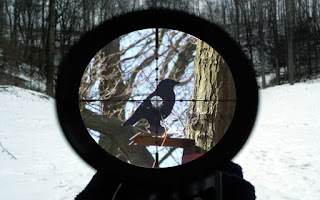In this
week’s blog we want to tell you about one of the most inclusive sports around,
Target Shooting.
Target shooting is a great sport for everyone, men, women, children and the physically
challenged. It covers three disciplines including shotgun, pistol and rifle.
Now shooting
clubs are going the extra mile to make sure that the sport is becoming accessible
to all, with acoustic shooting being one of the newest ways.
Acoustic shooting uses specially adapted rifles fitted with
special sights, which measure the level of light reflected from a target. The
light is then converted into sound to allow the shooter to locate and aim at a
target.
Participants wear special headphones to hear the sound, which
becomes more frequent the closer they are to the target.
Field target shooting has been popular for several decades now
and takes place outdoors in woodlands and open fields.
The targets are of the metal knock down
variety, originally shaped in the silhouette of animals or now also in basic
shapes (e.g. circle, diamond etc). Within the silhouette is a disc, referred to
as the “hit zone”. A strike on the hit zone results in the target falling flat
and a point is scored. A course normally consists of either 30, 40 or even 50
targets, placed within lanes, normally consisting of two targets to a lane.
There are clubs located all over the UK and
these clubs organise regional competitions and leagues, so you get the
opportunity to shoot at other people’s clubs.
Airguns are classed as firearms so there are
heavy penalties for any offence involving one. In contrast to the situation
with rifles, if an air rifle has a power of below 12ft/lb you do not need a
licence to own it in England and Wales. In Northern Ireland all airguns with power
in excess of 0.7ft/lb need to be held on a firearm certificate and it is likely
that such an airgun licence will be required in Scotland soon.
The situation regarding age is complicated. If you’re 18 or over
you can buy an air rifle and ammunition and use it where you have permission to
shoot. If you’re aged 14 to 17 you can’t buy an air rifle or ammunition but you
can borrow them. You can then use the borrowed kit without supervision on
private premises where you have permission.
However, if you’re below 14 years of age you can use an airgun
only under the supervision of someone who is at least 21 years old, on private
premises, with permission of the occupier. Finally, it’s worth remembering that
you have an obligation to prevent anyone under the age of 18 from gaining
unauthorised access to your airguns.
For those that may not be
sure what an air gun is, it is a type of gun that uses compressed air to fire
pellets or BBs. An air gun typically falls into one of two categories: an air
rifle or air pistol, both of which are replicas of small arms and launch
projectiles like small BB's or pellets. Both kinds of air gun can have one of
three means of propulsion: a spring-piston mechanism, high-pressure compressed
air or a CO2 canister. Based on the shooters intended use, an air gun can serve
many purposes.
Once you’ve picked a gun, you’ll need to choose
a calibre. The main options are .177 and .22 and main difference between the
calibres (diameter of the inside of the rifle barrel) is the weight of the
pellet they can fire. Generally, .177 pellets will be lighter and therefore
faster. This affects their trajectory and means they shoot flatter than the .22
but they also have less energy.
Don’t allow yourself to be constrained by the
old adage of .177 for feather and .22 for fur. Use whatever calibre you can
shoot with most consistently and stay within the maximum range of your ability.
BASC recommends a maximum range of 30 metres for airguns below 12ft/lb but if
you struggle to hit a target of 3cm (1¼in) – the typical target area for airgun
quarry – consistently at 20yd, then this is the maximum range you should shoot
at. Pace it out – it’s farther than you might think.
When it comes to pellets, I’m a bit of a traditionalist and
prefer the round-headed (diabolo) type. However, other sorts, such as pointed
and hollow-point are available. Just practise on targets, make sure you’re
confident with your grouping and you’ll be successful with most forms of
pellet.
Different guns, even of the same type and by the same
maker, seem to prefer different pellets, so try a few to ascertain which suit
you and your gun.
If you're interested in trying this great sport or just want some more gear to improve your shooting check out the Target Shooting section in store by clicking the image below!







Comments
Post a Comment